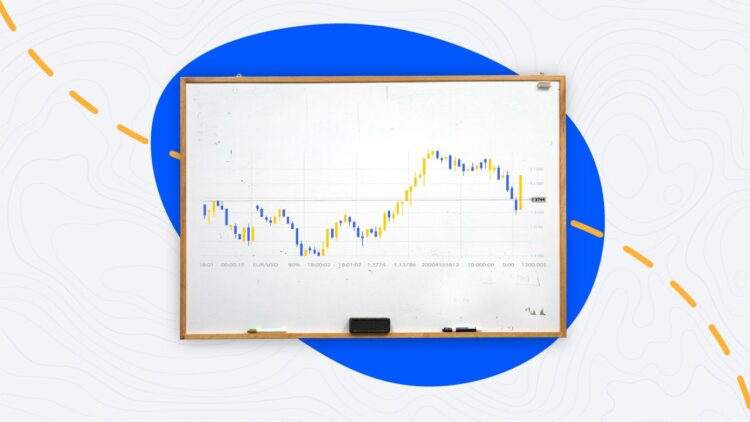Funded trading is an excellent opportunity for individuals looking to generate consistent income and achieve financial freedom. By understanding the basics of funded trading and how it works, you can leverage this powerful strategy to your advantage. In this article, we will explore the benefits of funded trading, explain how to choose the right program, discuss building a successful trading strategy, and highlight the risks and challenges associated with this endeavor.
Page Contents
Understanding Funded Trading
Funded trading is a process where traders receive capital from a proprietary trading firm to trade on their behalf. Unlike traditional trading, where you need to use your own funds, funded trading allows you to access significant amounts of capital to take advantage of market opportunities.
This approach eliminates the need to risk your personal savings and offers an opportunity to grow your account without significant initial investments.
But how exactly does funded trading work? Let’s dive deeper into the basics and mechanics of this innovative trading method.
The Basics of Funded Trading

Source: daytrading.com
To participate in funded trading, you need to pass certain evaluation criteria set by the trading firm. These criteria typically include demonstrating consistent profitability, risk management skills, and adherence to specific trading rules. This evaluation process ensures that the traders selected for funded accounts have the necessary skills and discipline to handle the firm’s capital.
Once accepted into the funded trading program, traders are provided with a funded trading account and a profit-sharing agreement. This agreement outlines the terms and conditions under which profits are shared between the trader and the firm. As you generate profits, you receive a percentage of those profits while the firm retains a portion as their share. This profit-sharing arrangement aligns the interests of both parties and motivates traders to perform well.
Now that we understand the evaluation process and profit-sharing agreement, let’s explore how funded trading actually works in practice.
How Funded Trading Works
When trading with a funded account, you have access to the firm’s capital and are allowed to keep a portion of the profits you generate. This means that you can trade with larger positions and take advantage of market movements that would otherwise be out of reach for individual traders with limited capital.
However, it’s important to note that the trading firm also sets specific risk parameters to protect both parties involved. These risk parameters define the maximum allowable drawdown, position size limits, and other risk management guidelines. By following these rules and managing risk effectively, traders can participate in larger market movements and potentially earn substantial profits without putting their personal finances at stake.
Furthermore, funded trading programs often provide traders with additional resources and support. This can include access to advanced trading tools, educational materials, and mentorship from experienced traders. These resources aim to enhance traders’ skills and increase their chances of success in the highly competitive trading environment.
In conclusion, funded trading offers an exciting opportunity for traders to access significant capital, trade with larger positions, and potentially earn substantial profits. By meeting the evaluation criteria, adhering to specific trading rules, and managing risk effectively, traders can take advantage of this innovative trading method to grow their trading accounts without risking their personal savings.
The Benefits of Funded Trading

Source: investopedia.com
Funded trading offers numerous benefits, making it an enticing option for aspiring traders. Let’s explore two key advantages: financial freedom and security.
Financial Freedom through Funded Trading
With traditional trading, the lack of substantial capital often limits traders’ ability to profit from significant market moves. Funded trading programs eliminate this barrier as traders gain access to substantial capital to trade larger positions. By capitalizing on market opportunities, traders can generate substantial profits and create a consistent income stream, ultimately leading to financial freedom.
Security in Funded Trading
Funded trading programs provide traders with a level of security not found in traditional trading. With proprietary trading firms, you don’t need to worry about your personal funds being exposed to potential losses. Additionally, reputable funded trading programs offer risk management tools, educational resources, and ongoing support to help traders succeed. This combination of security measures and support creates a conducive environment for traders to thrive.
Choosing the Right Funded Trading Program

Source: europeanbusinessreview.com
When selecting a funded trading program, there are several factors to consider to ensure a favorable experience.
Factors to Consider
First and foremost, evaluate the trading firm’s track record and reputation. Look for established firms with a proven success rate and positive reviews from traders. Do your research on platforms such as Trustpilot. Additionally, consider the program’s funding size and profit-sharing structure to ensure it aligns with your objectives. It’s also essential to assess the firm’s risk management policies and the available trading platforms and technology. Finally, check if the prop firm has a transparent leaderboard and funded trading profit split payout section.
Avoiding Common Pitfalls
Be wary of programs that require significant upfront fees or those promising unrealistic returns. Legitimate funded trading programs should have a transparent evaluation process and clear guidelines. Avoid programs that do not provide adequate support or lack a reputable track record in the industry. Taking the time to research and select the right program is crucial for a successful funded trading journey.
Building a Successful Funded Trading Strategy
Creating a robust trading strategy is vital for consistently profitable funded trading. Let’s explore the key components and the importance of adapting your strategy over time.
Essential Components of a Trading Strategy
A well-crafted trading strategy consists of several elements, including risk management rules, entry and exit criteria, position sizing, and trade execution plans. Defining these components and adhering to them consistently helps traders maintain discipline and manage risks effectively. Additionally, incorporating technical and fundamental analysis can enhance decision-making and improve trading outcomes.
Adapting Your Strategy Over Time
As market conditions change, it’s crucial to adjust your trading strategy accordingly. Regularly evaluating performance, identifying strengths and weaknesses, and making informed adjustments allows traders to stay ahead of market trends. Embracing new tools and techniques, continuous learning, and integrating feedback from experienced traders can all contribute to improving and refining your funded trading strategy.
Risks and Challenges in Funded Trading

Source: bankrate.com
Funded trading, like any trading activity, involves risks and challenges that traders must be aware of.
Potential Risks in Funded Trading
One of the primary risks in funded trading is the potential for losses. While proprietary trading firms set risk parameters to protect both parties, traders must still exercise caution and diligently manage risks. Market volatility, unexpected events, and behavioral biases can also impact trading outcomes. Having a disciplined approach, robust risk management practices, and continuous monitoring can help mitigate these risks.
Overcoming Trading Challenges
Challenges such as emotional decision-making, lack of patience, or overtrading can hinder success in funded trading. Developing a resilient mindset, staying disciplined, and embracing a systematic approach can help overcome these challenges. Engaging with a community of like-minded traders, seeking feedback, and continuously learning from both successes and failures are additional strategies for navigating trading challenges effectively.
In conclusion, funded trading can be a viable path to financial freedom and security. By understanding the fundamentals, assessing the benefits, selecting the right program, building a solid trading strategy, and managing risks effectively, traders can unlock the potential of funded trading. However, it’s crucial to approach this opportunity with a disciplined mindset, continuous learning, and a commitment to personal growth. With the right preparation and an informed approach, funded trading can be a transformative journey towards financial independence.





